The Apple Watch Review
by Joshua Ho & Brandon Chester on July 20, 2015 8:00 AM EST- Posted in
- Wearables
- Apple
- Mobile
- Apple Watch
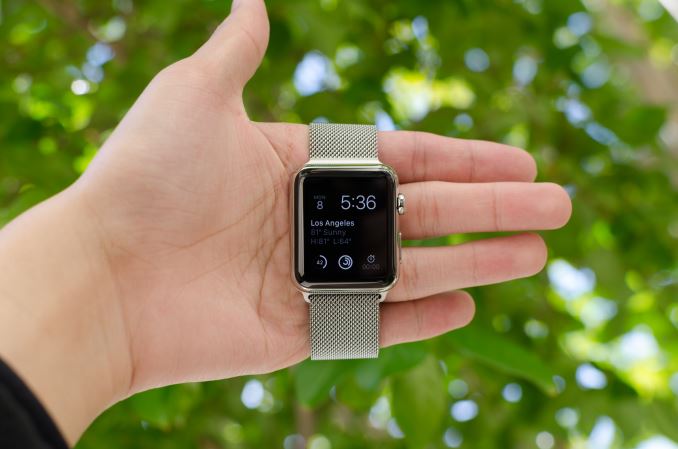
Prior to the launch of the Apple Watch, there had been rumors that Apple would make a watch for quite some time. In a broader sense, the wearables industry has become an area of significant interest as the next growth market after devices like tablets and smartphones as the high-end market became saturated and much of the growth that previously existed in the mobile space started to level out. This has resulted in a new alignment of markets and technology; the markets are ripe for a new device to recapture the wild growth of smartphones, and in the 8 years since the launch of the iPhone the inexorable march of Moore's Law has seen another 4 generations of improvements in technology. This time is finally right, it seems, to take a crack at something even smaller and more personal than the smartphone: the watch.
About two years ago, we put out our first wearable review, which examined Samsung’s Galaxy Gear. In the time since then, Android Wear has been launched, with numerous OEMs launching some form of wearable using Google’s wearable OS. However, Apple remained curiously absent from the field despite numerous rumors suggesting that Apple would soon launch a wearable. Last year, Apple announced the Apple Watch, but it wasn’t until just a few months ago that it finally went on sale.
Consequently, Apple didn’t get a first-movers advantage getting into wearables, though it remains to be seen whether that would even matter. As the creator of the iPhone and frequently on the cutting edge of technology and design, Apple had enough good will with the public to be late, and at the same time with all eyes on them they could not afford to screw up. The end result is that though by no means a slight towards Apple’s competitors, there is a clear distinction between everything that has come before the Apple Watch and everything that will come after. For the consumer market as a whole, the launch of the Apple Watch signifies that wearables have moved beyond the early adopter phase for techies, and are now being pitched at (and purchased by) the wider consumer market.
Normally, it’s easy enough to jump straight into what the device is and what’s new about said device, but in the case of the Apple Watch it’s really important that we explore the world in which this watch exists. The world is divided into people that wear watches, and people that don’t. Apple faces the distinct problem is trying to sell to both audiences, which have very different desires from a watch. The people that already have watches don’t want to give up the almost infinite battery life of conventional watches, high levels of water resistance, or anything else that is an accepted standard for watches.
The people that don’t wear watches are probably the closest thing to a clean slate that we’ll get when it comes to the wearable market. On a personal note, I fall into this camp, as I pretty much grew up in the age of widespread cellphone adoption. One of the convenient things about a phone is that they usually have the time on them, along with alarm and timer functionality. For me, this effectively meant that there was no point to wearing a watch. I also tended to have problems with the logistics involved in wearing a watch. In general, wristbands had an amazing tendency to either be too tight or too loose no matter how I adjusted the band. These issues were also compounded with any sort of physical exertion, as sweat tended to collect under the band which made wearing a watch noticeably more uncomfortable. These ergonomic issues, combined with the lack of functionality in a watch, ultimately made me stop wearing watches. Even before cellphones, wall-mounted clocks were more than sufficient for me when it came to checking the time, although I suspect I was far too young for time to really matter all that much.
Of course, I have been trying out various wearables over the course of the past few years. Although I didn’t try LG’s G Watch, I have been able to use the Pebble Steel and Motorola’s Moto 360. However, it was really a challenge for me to find anything to say about these wearables. They could definitely tell the time, and they had some extra functionality, but many of the same problems remained. The wearables I tested just weren’t all that comfortable to wear, and due to some technology limitations both weren’t really all that compelling to use. They could manage notifications, but other than that I found the functionality to be rather lacking. I often would forget to put them on at all before setting out for the day, and when I did I didn’t feel any particular need to go back to put it on my wrist. After a few months, I completely forgot about these wearables and stopped wearing them. At the time, I honestly felt like wearables could end up being another passing fad because it seemed most wearables faced similar barriers in terms of getting people to keep wearing them. Wearables like Fitbit suffered from a pretty significant abandonment rate, and given that I did the same for both the Pebble Steel and Moto 360 it increasingly felt like this would be a persistent problem.
In this context, it seems easy for Apple to fail. Generally speaking, no one has really figured out how to solve the problem of wearable adoption, chiefly because the functionality offered often wasn’t very compelling, and broadly speaking these wearables were often not well-designed. One of the first places we can start with the Apple Watch is the spec sheet. We can speak in empty platitudes about how specs don’t matter, but in the case of something like Apple Watch they definitely will. The right components won’t ensure success, but the wrong components can ensure a poor user experience.
| Apple Watch 38mm | Apple Watch 42mm | |
| SoC | Apple S1 520MHz CPU | Apple S1 520MHz CPU |
| RAM/NAND | 512MB LPDDR3(?) 8GB NAND |
512MB LPDDR3(?) 8GB NAND |
| Display | 1.32” 272x340 LG POLED | 1.5” 312x390 LG POLED |
| Dimensions | 38.6 x 33.3 x 10.5mm, 25/40/55/54 grams (Sport/Watch/Gold/Rose Gold) |
42 x 35.9 x 10.5mm, 30/50/69/67 grams (Sport/Watch/Gold/Rose Gold) |
| Battery | 205 mAh (0.78 Whr) | 246 mAh (0.93 Whr) |
| OS | WatchOS 1 | WatchOS 1 |
| Connectivity | 802.11/b/g/n + BT 4.0, NFC | 802.11/b/g/n + BT 4.0, NFC |
| Price | $349/549/10,000 (Sport/Watch/Edition) | $399/599/12,000 (Sport/Watch/Edition) |
As we can see, Apple has elected for some relatively conservative specifications. The SoC is relatively low power in nature, and the amount of RAM is probably about right for the kinds of tasks that a wearable will be used for at this time. The display is also of a decent resolution given the display size, and all the necessary wireless connectivity is present. It is notable that Apple is using a relatively small battery, but I suspect that this is necessary in order to fit all of the hardware into the casing of the watch. At least at a high level, it looks like Apple has put the right components into this wearable. However, it's going to take a deep examination of both technology and design to really figure out if Apple has avoided the pitfalls that I've discussed. One of the first and most obvious places to go first is the industrial and material design, which is what we'll talk about next.



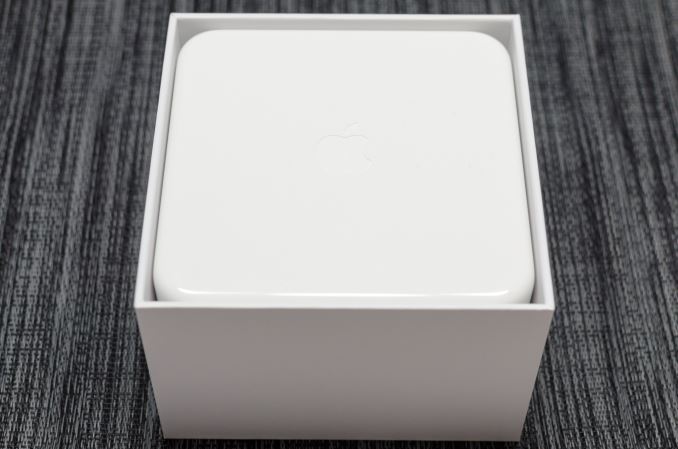
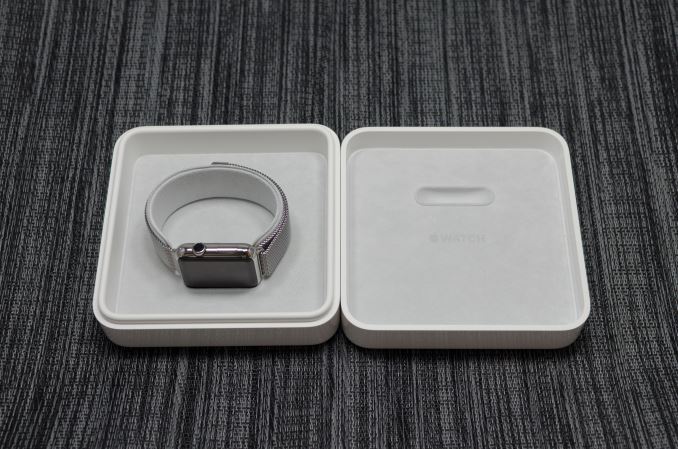
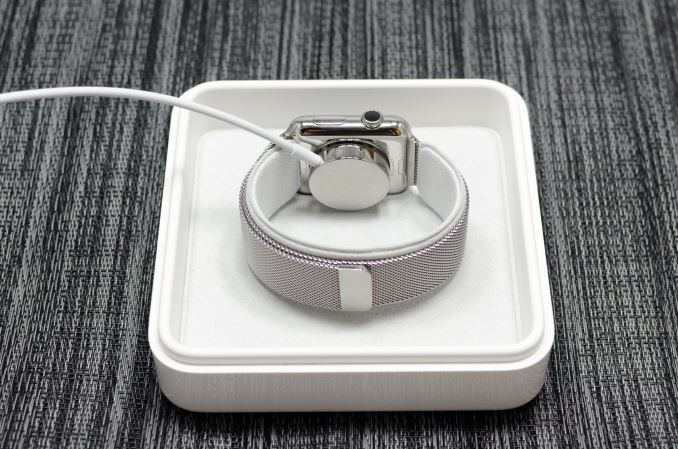

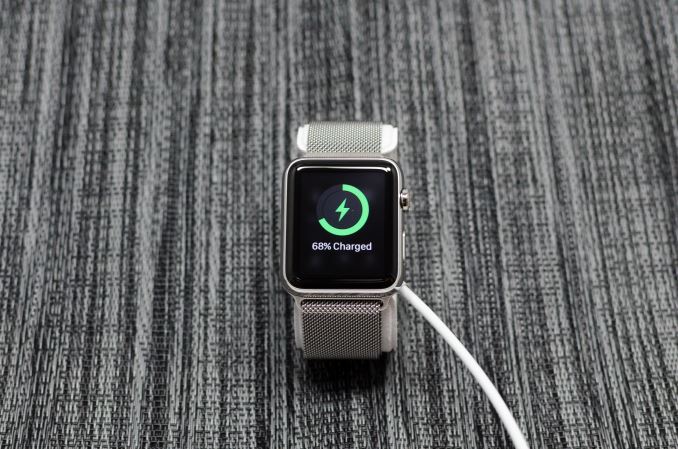








270 Comments
View All Comments
robinthakur - Monday, July 20, 2015 - link
I know what you mean. If I forget my Apple watch I suffer mild anxiety the whole day knowing that i'm not recording my activity ;p I've had it since April, and with the udpates so far, it's pretty indispensible. I can't wait to see where Apple takes it next.Michael Bay - Monday, July 20, 2015 - link
You mean NSA is bot recording your activity, but they still do.jjj - Monday, July 20, 2015 - link
Wow Anandtech selling out in a huge way again.Ugly, beyond stupid navigation and software, a lack of a basic understanding of what the product is, faked screen resolution , huge bezels to accommodate an insufficient battery and an oversized vibration "motor" . And then there is the price, 400$ for the kids version and 600 for the adult version- if you had any trace of decency you would "murder" them in this article just for the price.
Or maybe you guys just have the vision of a potato and can't quite grasp the concept of money either.
Or maybe you are just cowards and , like any other American publication, you can't even imagine saying anything negative about Apple.
pSupaNova - Monday, July 20, 2015 - link
Well Anand did move to Apple and Apple PR machine must be running on overtime to try and shift this product.Gadgety - Monday, July 20, 2015 - link
I agree. In addition it's probably one of the most unnecessarily wordy articles I've read in a long time. Who's the "I" in the article, Joshua or Brandon?Gadgety - Monday, July 20, 2015 - link
1794 words in the "final words" section alone.Ryan Smith - Monday, July 20, 2015 - link
I is Josh.Michael Bay - Monday, July 20, 2015 - link
Literally stop liking what I don`t like.Vera-Lee-Isay - Monday, July 20, 2015 - link
jjj, you might have emotional issues, but for many of us, the Apple Watch is a wonderful version 1.0. I do enjoy mine and as for the $600 price tag... no big deal. I spend more than that on weekend fun. The article is fine. I find my own experience with the watch very solid and quite fun to wear.wperry - Monday, July 20, 2015 - link
I'm glad that you were able to manufacture an opportunity to brag, but the reality is that price is an important factor. In absolute terms, you correctly touch on the fact that everyone sees a different value proposition based upon many things, personal finance being one of the major factors. What you completely neglect is the price relative to the market.Well, what's the market? Some people will compare it to other smart watches out there at 1/2 the price (or sometimes significantly less). Other people will compare is as a jewelry piece, in which case all bets are off (frankly, I don't think that it has much appeal here, as it has the potential to become too common to be remarkable, possibly even delving in to the cliche). Others will compare it to the convenience of pulling their (necessary) phone out of their pocket. In all of these regards, I think that it's hard to argue a solid value proposition to most people.